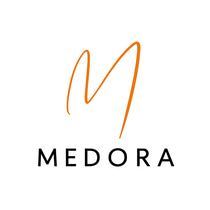Bridging Marketing and Business Development in Healthcare
In the healthcare industry, marketing and business development play critical yet distinct roles. Both are crucial for driving growth, but they approach it from different perspectives—one focuses on creating demand, while the other builds strategic relationships to ensure sustained revenue. Here's a closer look at the differences, the potential overlap, and how combining the two functions can unlock significant opportunities for healthcare organizations.
HEALTHCARE
Dr. Manish Shrivastava
11/7/20243 min read


Understanding the Core Focus
Marketing:
Marketing in healthcare primarily revolves around creating awareness and generating demand for products or services. It involves market research to understand patient needs, designing campaigns to highlight solutions, and ensuring digital and offline engagement with healthcare professionals (HCPs) and patients. Whether it's launching a new diagnostic device, promoting telehealth services, or increasing patient engagement for chronic care, marketing ensures visibility and relevance.
Business Development:
On the other hand, business development is about building partnerships and driving revenue. In healthcare, this could involve negotiating contracts with hospital networks, expanding into untapped markets, or forming alliances with pharmaceutical companies and health-tech startups. The focus is long-term, prioritizing growth through collaborations, innovation, and geographical or service-line expansion.
Activities and Metrics
The activities in each function are tailored to their goals:
Marketing Activities: These include market research, brand positioning, content creation, social media campaigns, and patient education programs. The success metrics are often tied to lead generation, patient engagement rates, and conversion statistics.
Business Development Activities: This function involves identifying new opportunities, negotiating strategic deals, creating distribution networks, and entering new markets. Metrics here focus on revenue growth, the number of successful partnerships, and market penetration.
Where They Overlap
While their core functions differ, marketing and business development share a common goal: driving growth. Marketing builds demand, while business development converts this demand into revenue. For instance, a successful marketing campaign can create awareness among patients about a new oncology drug, while the business development team secures partnerships with hospital networks for distribution.
Combining Marketing and Business Development Under One Role
Healthcare organizations sometimes consider combining these two functions under a single leadership role to enhance efficiency and synergy. However, this approach is not without challenges.
When Does It Work?
Combining marketing and business development can be effective in the following scenarios:
Smaller Organizations: For startups or midsized healthcare companies, a unified strategy ensures that demand creation and revenue generation are aligned without duplicating efforts.
Emerging Markets: In regions where healthcare access is still expanding, such as Southeast Asia or parts of Africa, a dual-role approach can fast-track both market awareness and partnerships.
Product Launches: For companies introducing a new therapy or diagnostic tool, an integrated leader can ensure seamless coordination between marketing campaigns and business partnerships.
Challenges of a Combined Role
Despite the potential benefits, combining marketing and business development has its complexities:
Skillset Requirements: The leader must be adept at both creating demand (a marketing skill) and forging relationships (a business development skill). Finding individuals who excel at both is rare.
Resource Allocation: Managing two distinct functions requires higher budgets and efficient systems. Balancing tactical marketing campaigns with strategic business negotiations is no small feat.
Organizational Structure: In larger organizations, where the scale of operations is significant, blending these roles could lead to operational inefficiencies.
Practical Solutions
To successfully integrate marketing and business development, healthcare organizations should:
Invest in Talent: Attract and retain high-caliber leaders with experience in both areas. Offering competitive compensation, clear career progression, and decision-making authority is essential.
Set Clear Goals: Ensure that the combined leader understands the distinct objectives of marketing (awareness and demand) and business development (revenue and partnerships).
Streamline Operations: Use tools like CRM systems to align marketing efforts with business opportunities, ensuring seamless communication between the two functions.
Applying These Lessons in Indonesia
The principles discussed above hold relevance not only for global healthcare markets but also for emerging markets like Indonesia.
In Indonesia, where healthcare access is still expanding, businesses often face unique challenges such as fragmented healthcare systems and varying patient demographics. Marketing plays a critical role in patient education, particularly for therapies targeting underserved regions. Simultaneously, business development is essential for forging partnerships with government bodies, private hospitals, and pharmaceutical companies to ensure distribution.
For example, a health-tech startup launching a telemedicine platform in Indonesia could use marketing to build awareness among patients in urban and rural areas. At the same time, business development teams can collaborate with local clinics and pharmacies to expand service delivery.
While marketing and business development have distinct roles, their combined efforts can drive significant growth in healthcare. Whether operating in established markets or emerging ones like Indonesia, organizations must evaluate their structure, resources, and goals to decide whether to integrate these functions or keep them separate. The key lies in understanding that both functions are indispensable—marketing creates the demand, while business development ensures the supply chain and partnerships to fulfil it.
By aligning their efforts, healthcare companies can build stronger patient connections, expand market presence, and achieve sustained growth.
Connect
Your partner in growth, market expansion, and digital execution across industries.
shri@medora.biz
+62-822-10-20-7000
© 2025. All rights reserved.
